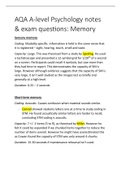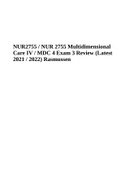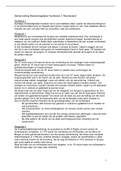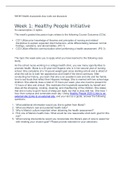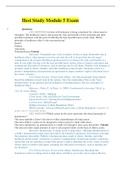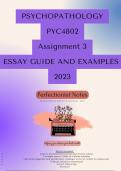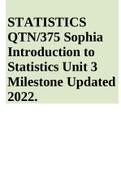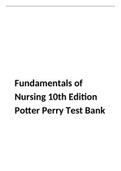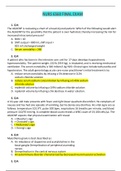Summary
Summary AQA A-level/AS-level Psychology Memory notes + free 25 past paper questions on memory
I am an A-level student currently predicted 3 A*s in Psychology, Sociology and Art & Design. These are my, quite detailed, notes for the memory topic in AQA's A-level Psychology. Along this, you will be able to practice what you have revised with 25 past paper questions on memory including short an...
[Show more]
